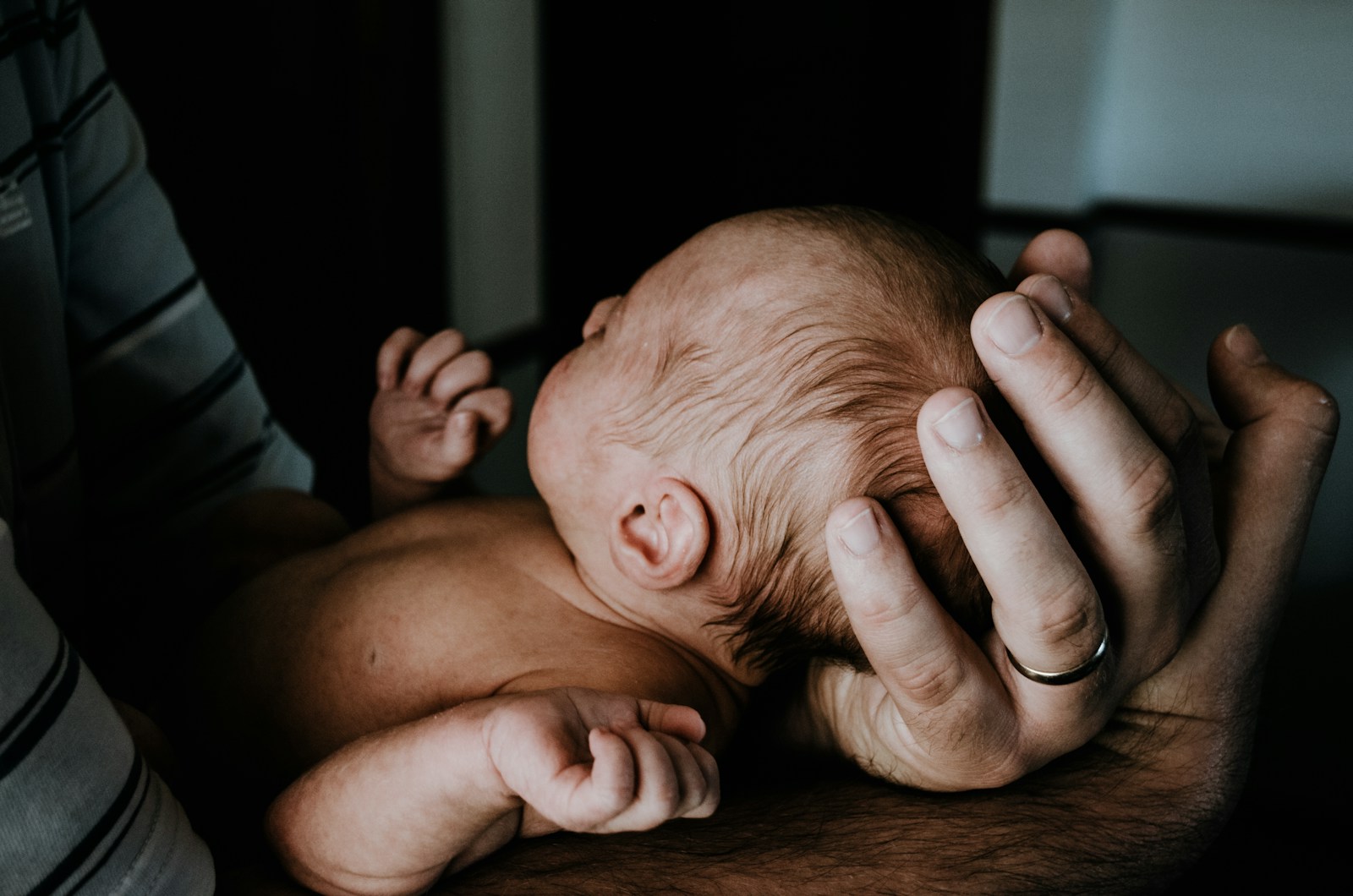Infantile spasms (IS), also known as West Syndrome, are a rare but severe type of seizure disorder that typically presents in infants between the ages of 3 to 12 months. While not as commonly discussed as other infant conditions, recognizing the early signs of infantile spasms is critical for prompt intervention. Left untreated, these seizures can lead to developmental delays, cognitive impairment, and other long-term neurological complications. The subtle and sometimes fleeting nature of infantile spasms makes them difficult to identify, as they may not resemble the more commonly recognized seizure types. As a new parent, it’s essential to be informed and vigilant, as early diagnosis and treatment can drastically improve outcomes.
This comprehensive guide outlines 13 key signs of infantile spasms and provides expert recommendations on how to respond if you suspect your child may be experiencing these seizures.
1. Sudden, Jerking Movements
One of the hallmark signs of infantile spasms is sudden, jerking movements that can appear as a brief muscle contraction or stiffening of the limbs. These jerks are often mistaken for the startle reflex, which is common in newborns, but the difference lies in their repetitiveness and the way they cluster together. During an episode, a baby’s arms may fling outward, their legs may draw up toward their chest, or their head may suddenly jerk forward or backward. These movements are usually rapid and last only a few seconds but can be quite startling to observe.
What to Do:
If you notice these jerking movements, try to observe whether they occur in clusters or if they are isolated incidents. Recording a video of the movements can be incredibly helpful for your pediatrician, as infantile spasms often require visual confirmation for diagnosis. Keep track of how frequently these movements occur and whether they are accompanied by other unusual behaviors, such as fussiness or difficulty feeding.
2. Clusters of Spasms
Unlike other types of seizures, infantile spasms tend to occur in clusters. This means that several spasms will happen in rapid succession, often within a minute or two. These clusters can occur multiple times a day, most commonly around sleep transitions—either just after waking or just before falling asleep. The repetitive nature of the spasms is a key diagnostic feature, and the number of spasms within a cluster can vary significantly, ranging from a few to dozens.
What to Do:
If you notice your baby having repetitive jerking movements within a short time frame, it’s crucial to document the frequency and timing of these clusters. Take note of how many spasms occur within each episode and whether they seem to follow a pattern, such as happening after naps or at bedtime. This information will be invaluable for your doctor in assessing whether these are indeed infantile spasms.
3. Abnormal Head Movements
Infantile spasms can manifest as sudden head movements that might not always be as obvious as limb jerks. These head movements often involve the head dropping forward (chin to chest) or jerking backward. While these movements can be subtle, they often happen in clusters and may coincide with other bodily spasms. Because infants lack the muscle control to counteract these movements, they may appear more pronounced than they would in older children or adults.
What to Do:
Watch for repetitive, abnormal head movements, particularly during or after sleep. While occasional head jerks might be normal for a baby, consistent or repeated movements, especially in combination with other signs of infantile spasms, warrant a closer look. If these movements seem to occur during periods of wakefulness or without any clear trigger, be sure to record and share this with your healthcare provider.
4. Stiffening of the Body
Another common sign of infantile spasms is a sudden stiffening or tensing of the baby’s body. This stiffening can affect the entire body or specific parts, such as the arms, legs, or neck. Unlike typical stretches or startle reflexes, this stiffening occurs suddenly and may be accompanied by the other signs of infantile spasms, like head nodding or arm jerks. The rigidity may last only a second or two but can repeat in clusters over a short period.
What to Do:
If you observe your baby’s body suddenly stiffening, particularly during times of calm, such as feeding or transitioning to sleep, take note of the context and frequency. This type of rigidity can be difficult to differentiate from other normal infant movements, but if it occurs frequently or in combination with other spasms, it’s important to consult a doctor. Recording these episodes can be helpful in getting an accurate diagnosis.
5. Decreased Responsiveness
During or immediately following a spasm, infants may seem less engaged or responsive than usual. This can manifest as a lack of eye contact, a blank stare, or a general sense of disengagement from their surroundings. The baby may appear “out of it” or dazed for a few moments, even after the spasm itself has ended. This period of reduced awareness can be brief, but it is an important clue that something may be affecting the baby neurologically.
What to Do:
If your baby seems unusually quiet or unresponsive after an episode of jerking movements, try to gauge how long this state lasts and how frequently it occurs. Any prolonged periods of disengagement, especially if they follow clusters of spasms, should be brought to the attention of a pediatrician. Video recordings can be especially useful in showing doctors what happens during these episodes.
6. Developmental Regression
One of the most alarming signs of infantile spasms is developmental regression, where a baby loses skills they had previously gained. This might include forgetting how to roll over, reduced vocalization (such as babbling), or losing interest in engaging with toys and people. Developmental regression is often a sign that the spasms are affecting the brain’s ability to function and develop normally, which is why immediate intervention is critical.
What to Do:
Monitor your baby’s developmental milestones closely, and if you notice that they seem to be losing skills, contact your pediatrician immediately. Developmental regression is a red flag that something more serious could be affecting your baby’s brain function. Keep a record of when these changes began, and make note of any other concerning symptoms you’ve observed.
7. Lack of Eye Contact
Babies with infantile spasms may exhibit a noticeable reduction in eye contact. Whereas most infants seek out eye contact with their caregivers as part of normal social development, a baby with infantile spasms may seem to avoid it. This lack of engagement can be intermittent or more persistent, and it often coincides with other signs of neurological disruption.
What to Do:
If you notice that your baby is avoiding eye contact or not responding to visual cues the way they used to, bring this to your doctor’s attention. The absence of eye contact is an important indicator of potential neurological issues and should be considered in the context of other symptoms.
8. Irritability and Fussiness
Babies who experience infantile spasms often become irritable or fussy, especially when spasms occur frequently. While some fussiness is normal in infants, excessive or prolonged irritability, particularly in conjunction with spasms, could indicate discomfort or confusion resulting from these episodes. The baby may cry more often or appear inconsolable during periods when they experience spasms.
What to Do:
Track your baby’s mood patterns. If they seem excessively fussy, especially around the times spasms occur, mention this to your pediatrician. Irritability alone might not be a sign of infantile spasms, but in combination with other symptoms, it could point to an underlying issue.
9. Crying During or After Spasms
Some infants may cry during or immediately following a spasm cluster. This crying may be brief but can sometimes indicate that the baby is experiencing distress. While not all babies cry during spasms, it’s something to watch for, as it can be another clue that the movements are more than just normal infant reflexes.
What to Do:
If your baby cries or seems distressed after spasms, it’s important to comfort them but also document when and how frequently this occurs. Discuss this behavior with your healthcare provider, as it may help in diagnosing the condition.
10. Poor Feeding
Infantile spasms can interfere with normal feeding patterns. A baby who experiences these spasms may have difficulty latching onto the breast or bottle, or they may lose interest in feeding altogether. The effort required to feed might be interrupted by the spasms, leading to poor weight gain and nutritional issues over time.
What to Do:
If your baby is struggling to feed or has lost interest in feeding, it’s important to address this with your pediatrician, as poor feeding can lead to other health complications. Keep track of how often your baby feeds and if spasms seem to interfere with their ability to nurse or bottle-feed.
11. Abnormal Breathing Patterns
During a spasm episode, some babies may exhibit changes in their breathing patterns, such as rapid, shallow breaths or short pauses in breathing. While these changes are often brief, they can be concerning when they occur repeatedly or in conjunction with other signs of infantile spasms.
What to Do:
If you observe abnormal breathing patterns during or after a spasm, stay calm but vigilant. If the irregular breathing lasts longer than a few seconds or is accompanied by a change in skin color, seek immediate medical attention. It’s crucial to report any breathing difficulties to your doctor, as these can indicate a more serious underlying issue.
12. Spasms During Sleep Transitions
Infantile spasms frequently occur just after waking up or right before falling asleep. These times of transition can make it easier to spot the spasms since the baby is otherwise calm and still. You may notice the spasms happen regularly during these periods of wake-sleep transition. It’s not uncommon for the spasms to disrupt the baby’s sleep, causing them to wake up or become restless.
What to Do:
Monitor your baby’s behavior during these transitions. If you notice a pattern of spasms occurring consistently when your baby is waking up or falling asleep, make sure to record these events. Share this pattern with your pediatrician or neurologist, as it can be a critical clue in diagnosing infantile spasms. If these spasms seem to disrupt your baby’s sleep frequently, it’s even more important to bring it to medical attention, as sleep is crucial for brain development in infants.
13. Subtle, Repetitive Movements
Not all infantile spasms are dramatic or obvious. In some cases, the spasms can present as very subtle, repetitive movements, such as slight head nodding, twitching of the fingers, or small facial grimaces. These movements can be easy to miss or might be mistaken for normal infant behavior. However, when these small movements occur repeatedly in clusters, it may signal a neurological issue like infantile spasms.
What to Do:
Pay close attention to any subtle movements that seem unusual or repetitive. If these movements appear in clusters or happen frequently without any clear cause, it’s important to document them. Even subtle movements can be a sign of something more serious, and video documentation can help healthcare professionals make a more accurate diagnosis. Be sure to note the frequency and timing of these movements, as this information can be crucial in understanding the full picture of what’s happening with your baby.
How to Respond as a New Parent
As a new parent, it’s natural to feel overwhelmed if you suspect your baby is experiencing infantile spasms. However, taking quick and appropriate action can make a significant difference in your baby’s outcome. Early diagnosis and treatment of infantile spasms are critical in preventing potential long-term damage to your baby’s brain and development. Here’s how you can respond if you notice any of the above signs.
1. Record the Episodes
The first and most important step is to document what you’re seeing. Use your phone or another device to record videos of your baby’s spasms. Medical professionals often rely on video evidence to confirm the presence of infantile spasms, as they can be difficult to observe during a single office visit. Try to capture different episodes, especially those that occur at different times of day or during sleep transitions.
2. Contact Your Pediatrician Immediately
Once you’ve documented the spasms, contact your pediatrician as soon as possible. Explain what you’ve observed and share the videos if possible. Infantile spasms are considered a medical emergency due to their potential impact on brain development, so early intervention is essential. Your pediatrician may refer you to a pediatric neurologist or order an EEG (electroencephalogram) to measure your baby’s brain activity.
3. Request an Electroencephalogram (EEG)
An EEG is the most effective diagnostic tool for identifying infantile spasms. This test measures the electrical activity in your baby’s brain and can detect the chaotic brainwave pattern known as hypsarrhythmia, which is characteristic of infantile spasms. If your pediatrician or neurologist suspects infantile spasms, they will likely recommend an EEG to confirm the diagnosis. The sooner this test is performed, the sooner treatment can begin.
4. Consult a Pediatric Neurologist
Infantile spasms require specialized care, often from a pediatric neurologist who is familiar with this rare condition. Your pediatrician can provide a referral to a neurologist, who will conduct a thorough assessment and recommend a treatment plan. Neurologists will typically assess not only the spasms themselves but also the underlying causes, such as brain malformations, metabolic disorders, or genetic conditions.
5. Begin Treatment Promptly
Treatment for infantile spasms needs to begin as soon as possible to prevent long-term developmental issues. The primary goal is to stop the spasms and address the underlying cause. Common treatments include:
- Adrenocorticotropic Hormone (ACTH): One of the most effective treatments for infantile spasms, ACTH is a hormone administered through injections that helps reduce abnormal brain activity and control spasms.
- Vigabatrin: An anticonvulsant medication, often used for infants with tuberous sclerosis complex (a condition associated with infantile spasms), Vigabatrin works by enhancing the action of GABA, a neurotransmitter that calms brain activity.
- Corticosteroids: Prednisolone or other corticosteroids may be prescribed to reduce inflammation and help control seizures. These medications are often used as alternatives to ACTH.
- Antiepileptic Drugs (AEDs): Other antiepileptic medications may be considered if ACTH or Vigabatrin are not effective.
Early intervention is critical. The longer infantile spasms go untreated, the greater the risk of developmental delays, cognitive impairment, and more severe forms of epilepsy later in life.
6. Monitor Your Baby’s Development Closely
After diagnosis and the initiation of treatment, continue to monitor your baby’s developmental milestones. Keep track of their physical, cognitive, and social development to ensure that treatment is effective and that there are no further signs of regression. If your baby experiences any developmental delays or difficulties, early intervention therapies—such as physical therapy, occupational therapy, or speech therapy—can help support their development.
7. Consider Genetic Testing or Additional Diagnostics
If the underlying cause of your baby’s infantile spasms is unclear, your pediatric neurologist may recommend genetic testing, metabolic screening, or brain imaging (such as an MRI). Identifying the root cause of the spasms can guide more targeted treatment and help predict your baby’s long-term prognosis.
8. Seek Emotional Support and Guidance
Dealing with infantile spasms can be emotionally taxing for parents. It’s important to seek support for yourself as you navigate this challenging time. Connecting with other parents who have experienced similar challenges can be incredibly helpful. Support groups for parents of children with epilepsy or infantile spasms can provide emotional support, practical advice, and guidance. Additionally, consider speaking with a counselor or therapist if you feel overwhelmed by the emotional strain of managing your child’s health condition.
Conclusion
Infantile spasms are a serious and complex neurological condition that can have significant implications for a child’s development if left untreated. As a new parent, it’s important to familiarize yourself with the signs, which may include sudden jerking movements, developmental regression, poor feeding, and clusters of subtle or dramatic spasms. By being vigilant and proactive, you can help ensure that your baby receives prompt medical attention, which is crucial for minimizing the long-term impact of infantile spasms on brain development.
If you suspect your child may be experiencing infantile spasms, document the episodes, consult your pediatrician immediately, and be prepared to work closely with a pediatric neurologist. With early diagnosis and the right treatment plan, many children can recover from infantile spasms and continue to meet developmental milestones. Remember that you are not alone—medical professionals, support groups, and other resources are available to help you and your family navigate this challenging condition.




